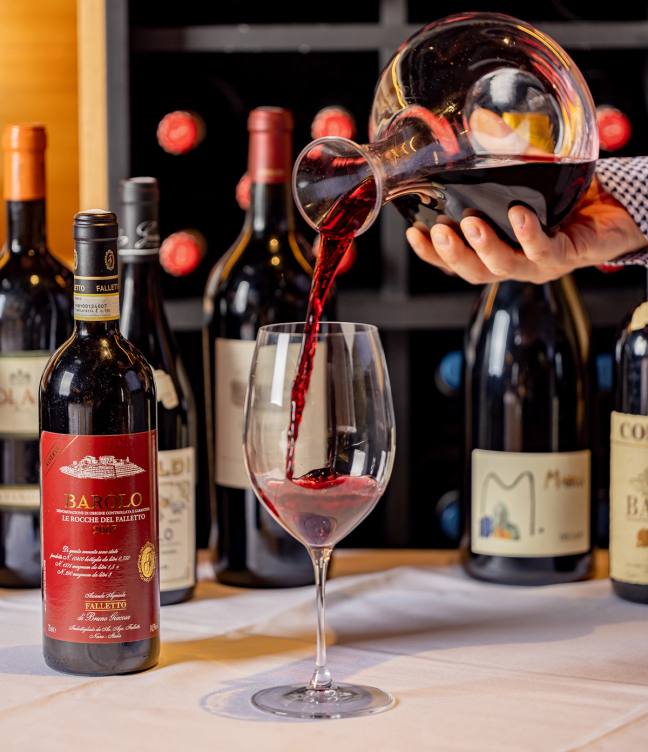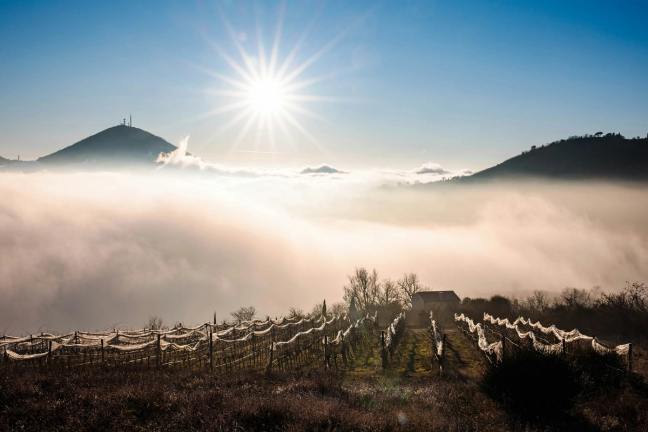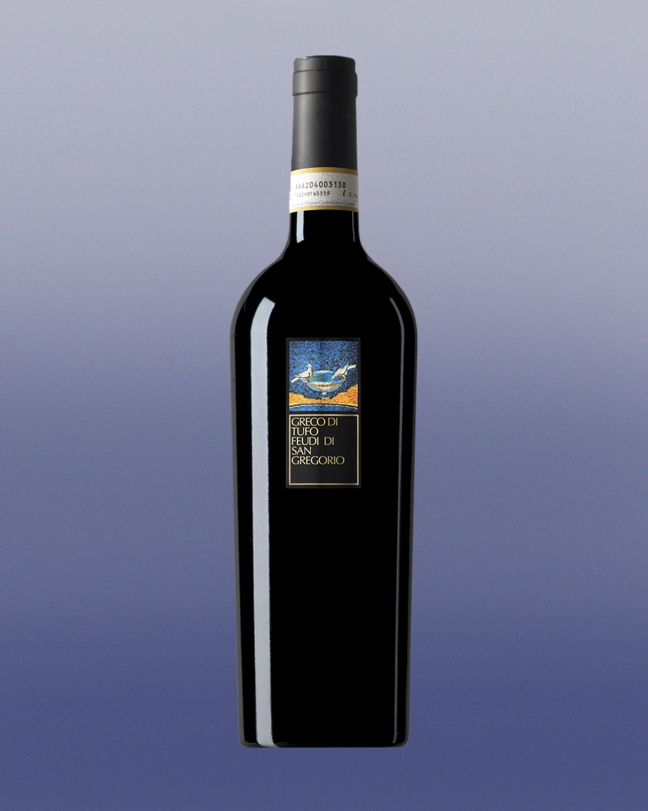A beginner’s guide to Italian wine
No country on Earth produces more in this department than Italy – and no country’s cellars are more diverse. Here, we lend a guiding hand
Being confronted with a thumping great wine list can be a challenge at the best of times. But, being confronted with a thumping great wine list that is almost entirely Italian – as I was, recently, at Enoteca Turi, a restaurant in London – is, somehow, more taxing still.
The list there spans almost 500 wines, and I made it easy for myself by heading straight to the by-the-glass section (also all-Italian), thereby allowing myself more time to focus on enjoying the excellent food. (If you haven’t been, go – it’s that rare place that manages to harness that elusive relaxed-yet-quality neighbourhood-restaurant vibe, but in central London. Well, almost – it’s in Pimlico.)


No country on Earth produces more wine than Italy – and no country’s wines are more diverse. Italy is home to more than 500 grape varieties, many of them unknown to all but the most boring of wine bores. Not that the peninsula tends to use these varieties to identify its wines, anyway. No, most Italian wines are known, instead, by their region of origin, which, like the French appellation system, should – in theory – provide a stylistic framework whereby consumers know what to expect from the likes of Chianti and Valpolicella.
All of which sounds fine, of course, until you realise that there are 329 DOCs (Denominazione di Origine Controllata), plus another 74 DOCGs (a more stringent classification, the ‘G’ standing for Garantita) for good measure. And we won’t even worry about the 118 IGTs (Indicazione Geografica Tipica) for now. So, a glass of Lessini Durello, anyone? Or how about a Pelaverga Verduno?
The upshot of such complexity is that for many smaller Italian producers, from lesser-known regions, the country’s sheer diversity can prevent their wines from reaching public consciousness in the same way that, say, the ubiquitous, but underwhelming, pinot grigio has. From a consumer’s perspective, the flipside is that by flying under the radar, many such wines offer excellent value – if you know where to look.

David Gleave MW – who, as founder and chairman of specialist importer Liberty Wines, supplies many wine-focused retailers and restaurants, including Enoteca Turi – says Italy’s vast choice is not as overwhelming as it might appear. ‘It’s true that Italy has 560 or so grape varieties, but the most important varieties are far fewer in number,’ says Gleave.
Among those he suggests seeking out is the hearty red variety nero d’avola (commonly found in Sicily), which has traditionally been used to make blending wines, via a darker, more extracted style. ‘But nero d’avola is best made in a more medium-weight style, when it shows its aromatics and tannin complexity to a much greater extent,’ says Gleave – something that the more enlightened Sicilian producers are starting to realise.
Within Sicily, the wines of Etna (mainly made via the local grape nerello mascalese) are particularly on-trend right now. Being planted on the slopes of an active volcano seems to have protected the vines from the dreaded phylloxera bug, meaning they are largely grown on their own rootstock, and are often of a venerable age, resulting in a certain vibrancy and complexity in the glass that matches current tastes for medium-bodied, aromatic wines that aren’t a million miles from the elegance of Burgundy or the northern Rhône.

Southern Italy, as a whole, is home to a wealth of indigenous varieties, something that some commentators feel is starting to play to its benefit. ‘Consumers today are becoming more open to new styles and varieties,’ says Alberto Antonini, arguably Italy’s most renowned wine consultant, who makes wine right across the country and further afield. ‘They want an experience from wine; they want to discover things.’
Feudi di San Gregorio, based in Campania and not too far from Naples, provides a fine opportunity in this department, having been among the biggest drivers of southern Italy’s revived vinous reputation in recent years. This is an estate that is rooted in its local heritage – it was founded, in 1986, in the aftermath of a damaging earthquake, as a way to help rebuild and invest in the region’s identity. It has done so by championing local grape varieties, notably the beefy red aglianico and the fragrant, often floral whites falanghina, fiano and Greco di Tufo.

The latter is the perfect example of Italy’s wonderful absurdity, being both a region (a DOCG, no less) and a grape variety. It seems to thrive on volcanic soils, which may explain its inherent tangy minerality. In Feudi di San Gregorio’s hands, the wine is left to rest on its lees (spent yeast cells) for a period of time, resulting in bright citrus aromas that burst out of the glass and offer a certain weight and texture in the mouth – all of which is far more interesting than any pinot grigio.
Want more drinks content? This is a brief guide to wine trends over the decades…

Become a Gentleman’s Journal Member?
Like the Gentleman’s Journal? Why not join the Clubhouse, a special kind of private club where members receive offers and experiences from hand-picked, premium brands. You will also receive invites to exclusive events, the quarterly print magazine delivered directly to your door and your own membership card.
Further reading

Restaurant review: with ABC Kitchens, Jean-Georges Vongerichten produces yet another multi-layered venture

Defined by power and body, this is why the Penfolds Bin 707 is analogous to a jumbo jet
